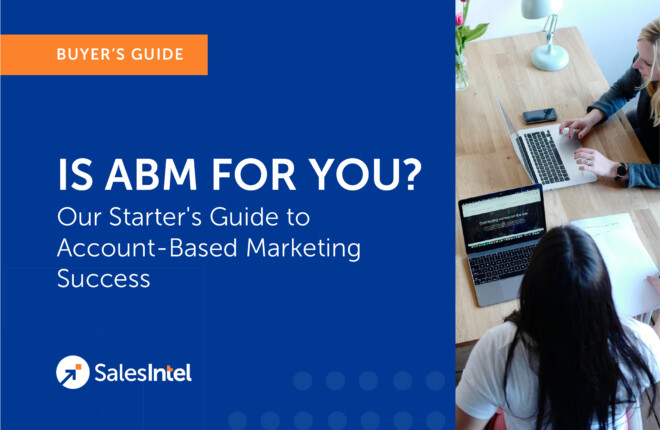Marketing is an ever-evolving field where you need to come up with innovative ideas, especially in the B2B space.
One of those ideas that is trending in B2B marketing is Account-Based Marketing (ABM).
ABM complements the conventional, short-term marketing goals of generating leads with efforts focused on driving long-term revenue.
Account Based Marketing (ABM) vs Traditional Marketing
Account-based marketing (ABM) is a targeted approach to marketing that focuses on specific, high-value accounts rather than a broad audience. Traditional marketing, on the other hand, uses a more general approach to reach a larger group of potential customers. Both approaches can be effective, but ABM may be more suitable for companies looking to focus their marketing efforts on a select group of key accounts.
This Account-Based Marketing guide will cover:
- What is Account-Based Marketing (ABM)?
- Importance of the ABM approach in B2B
- The Benefits of ABM
- Who Should Use an Account-Based Marketing Approach?
- Five Common Problems that ABM can solve
- ABM Mistakes to Avoid
- ABM Best Practices
- LinkedIn Account-Based Marketing
- How to Use ABM to Enter New Markets
- Generating B2B Leads Using ABM
- Creating Content for ABM Campaigns
- How to Turn Your Accounts into Customers?
- How to Turn Your Website Visitors Into Customers?
- How to Automate your ABM Campaign
- Using B2B Data and ABM Platform Together
- Importance of Quality Data in ABM
- Using Intent Data to Drive More Leads
- How to Prepare Your B2B Database for ABM?
- How to Choose the Best B2B Data Partner for ABM?
- Executing Your Strategy Using SalesIntel for Better Results
1. What is Account Based Marketing (ABM)?
ABM is, in the simplest terms, a marketing strategy that allows marketers to target and engage a focused set of target audiences. By strategically targeting accounts, marketing and sales teams need to work together to agree on targets and create account-specific messaging.
What makes ABM a preferred approach for B2B companies?
Higher revenues in a shorter time frame.
It is just like reverse-engineering the traditional marketing approach.
Rather than throwing a large net for their lead-generation activities, marketers using ABM are working closely with the sales team to identify key accounts and prospects within them and then tailoring personalized campaigns and communications with the target accounts and their purchasing team.
To learn more about Account-Based Marketing. Here’s our webinar recap on ABM for beginners.
2. The Importance of ABM in B2B
As Account Based Marketing (ABM) evolves from a modern cutting-edge approach into a well-known, trusted technique, marketers are realizing its importance and beginning to implement it.
According to a study conducted by Oracle and Argyle among B2B marketers, as many as 48% of respondents assume that ABM is a very effective tool for the marketing strategy of a business, and 16% think that ABM is crucial to the success of a business.
Check this detailed Infographic –
Additionally, 52% of respondents said ABM was a tactic that perfectly complemented the numerous marketing resources and activities of an organization. Since this approach focuses on concentrating on only important accounts, you can make your marketing campaigns more personalized and targeted. This ultimately improves your conversion rate.
Here’s a detailed article that focuses on the need for ABM strategy for your business in the first place.
3. The Benefits of Account Based Marketing (ABM)
First and foremost, Account-Based Marketing helps you get and keep the attention of the right people and reach them at the right time.
Personalized Approach:
The major advantage of Account-Based Marketing is that it addresses the needs and concerns of customers. This demonstrates your understanding of the company, and it’s needs, and increases the opportunities for acquiring the account.
Higher ROI:
In a study for the Altera group, 97% said that ABM resulted in a higher ROI than other investment strategies.
Aligns Sales and Marketing Teams:
The focused, high-effort nature of ABM has shown that it aligns with sales and marketing. The State of Pipeline Marketing showed that marketers using ABM are 50% more likely to report better alignment with their sales team.
Explore more benefits of Account-Based Marketing.
4. Who Should Use ABM?
Account-Based Marketing (ABM) requires a highly-focused marketing approach and a detailed strategy without leaving any loopholes. This high-contact, multi-touch marketing strategy requires appropriate time and resource distribution.
As a result, not every business can implement ABM successfully.
To ensure you do it right, brainstorm with your team on a few questions. Some of the questions that you can consider are listed below:
What is our usual customer base?
If you have big accounts on your target list, ABM is the perfect approach for targeting them. However, if your focus is on high volume, small accounts, ABM may not be a good option as it requires significant manpower and resources to devote to each account.
How much customer data do we have?
You should have a sizable database to execute an ABM strategy successfully. If your target markets are too varied, or you simply don’t have enough customer data, then ABM will be much more difficult to implement.
Here’s an eBook that will help answer your questions – Is ABM for you?
5. Five Common Problems that ABM can solve
1. Faster Sales Process
A final purchasing decision involves several parties. Account-based marketing helps you to harness this, which can frequently slow down your regular sales and marketing process. ABM is unique in that it allows you to precisely nurture your key decision-maker, as well as other relevant prospects, to streamline and accelerate the sales process.
2. Customer Acquisition Process
ABM enables marketing teams to remove bad leads that annoy sales colleagues. It also throws a brighter light on the client acquisition process, making marketing teams better in the long term.
3. Marketing Resources Used Efficiently
ABM focuses your marketing efforts on important accounts to maximize revenue. Because of their focused focus, these projects make the best use of your most important resources: time and money.
4. Data-Driven Decisions To Align Sales And Marketing
Account-based marketing has several advantages, including improved communication between sales and marketing departments. Marketing has typically been a numbers game, but sales only want a few qualified leads that they feel will close. By identifying important B2B stakeholders, ABM provides a framework for sales and marketing to reduce sales cycles and optimize upsell/cross-selling possibilities.
5. Cost Efficiency
Direct marketing to accounts your company has identified as potential may be incredibly cost-effective. ABM makes a lot of sense from a financial standpoint for organizations that know exactly who their most appealing prospects are.
6. ABM Mistakes to Avoid
Some early adopters of ABM are getting great results. However, some businesses have seen their lofty ABM ambitions fall short after putting in much effort. Why is that?
The dirty little secret with Account-Based Marketing is – It’s easy to understand the ABM strategy, but implementing it effectively in your sales and marketing plan is difficult (that’s why most still don’t do it).
Some common ABM mistakes include:
- Not having a clear view of who your target accounts and the decision-makers or decision-making unit at them are
- Not aligning sales and marketing
- Lack of personalization due to insufficient research
- Not reviewing your ABM toolkit
- Not creating ABM-focussed content
- Considering Inbound Marketing & ABM as incompatible strategies
- Making account selection like a wish list instead of a strategically selected list of accounts
Apart from the above list of mistakes, I would encourage you to explore 4 ABM mistakes that you should never repeat to become a successful account-based marketer.
Here is good ebook on ABM
7. Account Based Marketing Best Practices
While it is necessary to avoid ABM mistakes, you need to follow some best practices to master Account-Based Marketing. Here are some of those:
- Focus on identifying and understanding your high-value, high-intent audience
- Don’t make a sales pitch, address and try to resolve their pain points
- Infuse relevance and context into all your communication
- Don’t try to mix all the channels. Choose only the relevant and best channels for all communication
- Measure, track, and optimize your Account-Based Marketing campaigns
We recently presented a webinar on the best practices to execute a successful ABM pretargeting campaign. Here’s the recap of our webinar.
8. Linkedin Account-Based Marketing
LinkedIn Account-Based Marketing (ABM) has shown to be an efficient way for marketers to create high-quality sales leads. As opposed to casting a wide net, account-based marketing is a more targeted technique that targets the individuals you want to become clients.
LinkedIn is a really successful ABM channel. Why does LinkedIn perform so well for ABM campaigns?
- LinkedIn provides precise audience targetings, such as by business name or email address.
- You may run many campaigns, quickly adjust your tests, or utilize auto-optimization tools to save costs.
- Numerous sorts of campaigns are available, including a platform-native lead collection tool that lowers friction while collecting lead information.
- The analytics are extensive, allowing you to determine which messaging, design, and bid strategy is working.
An effective LinkedIn ABM campaign may generate a fresh pool of interested prospects while gradually reducing cold calling requirements.
Read Ebook on: Shifting Your ABM Strategy Into Top Gear
9. How to Use ABM to Enter a New Market
If you are launching a new product or expanding to a new area, it’s a huge undertaking to develop that market.
Many B2B marketing and sales teams have succeeded in implementing an Account-Based Marketing strategy to penetrate a new market. However, finding the right contacts from the right companies in a new market can be difficult if these teams do not have access to the types of information that will help them to make data-driven decisions on whom to target with their ABM campaigns.
For instance, suppose you are selling an expensive SaaS software solution or a consulting service. Rather than taking a blanket approach – pursuing small businesses, SMBs, and enterprises – you could start by concentrating on those accounts that have the highest need and the budget. By combined efforts and resources, the marketing and sales teams can more efficiently penetrate new markets and convert accounts.
If you want to dive deeper into how you can use ABM intelligently to enter a new market, here’s a webinar recap.
10. Generating B2B Leads Using Account-Based Marketing
As Account-Based Marketing requires an account-specific approach, you need to study the accounts that you are targeting. This makes it easy for marketers to plan marketing activities.
ABM focuses on lead generation strategies to create tailored marketing campaigns for specific high-value accounts. With an eye on quality outreach, ABM enables organizations to construct strategic sets of activities that are consistent and highly tailored to improve relationship-building – not just in the short term, but also in the long run.
We have delivered a webinar on using ABM outbound tactics to drive inbound leads where we discussed how to drive engagement with your ideal client profile using account-based targeting methodologies.
Here’s the webinar recap.
11. Creating Content for ABM Campaigns
Marketers often go wide, trying to reach as many people as possible, with as many pieces of content, and in the shortest period of time possible. This scattershot approach inevitably results in wasted resources, material, and time. That certainly isn’t high-value.
High-value content is content that is relevant to your specific and desired audience. An Account-Based Marketing strategy lets you define specific targets and approach them with personalized content.
Knowing your accounts and their stakeholders well is essential for thoroughly personalized content.
While creating an ICP (Ideal Customer Profile) helps you recognize and segment the most valuable accounts, and target new ones, you will need more detailed information about those accounts to produce the most personalized content for your ABM strategy.
12. How to Turn Your Accounts into Customers?
As a marketer, it’s crucial to understand how to utilize Account-Based Marketing tactics to convert prospects into buyers.
An Account-Based Marketing sales funnel is all about the customer. Taking into account the complexity (and multiple points) of the decision-making process, you need to nurture accounts using personalized content and use the right channels to reach them.
If you’re not using the right channels to reach the potential accounts, your rate of success will falter.
If a business receives a tailored offer that fits its unique needs, there is no reason why it is much more likely to engage. It is a customer-centric approach, and this is where its most prominent value is.
However, taking the right approach is crucial. Here are some useful tips from marketing experts on how to turn accounts into customers.
13. How to Turn Your Website Visitors Into Customers
The latest marketing approach to take over the field of B2B lead generation has been Account-Based Marketing (ABM). However, the search for innovative lead generation techniques doesn’t end here. ABM approach, if combined with a visitor identification tool, can give you the competitive edge that you are looking for.
The best source to identify your prospects is your website. However, according to Marketo, 96% of website visitors will not make a purchase or submit a form. Marketers can only concentrate on the 4% of website users who opt in or sign up.
Marketers can unmask anonymous visitors by using a visitor identification tool. It helps you unlock data about your website visitors without requiring them to fill out forms. Once you have unmasked the visitors, it’s time to choose the best approach to reach them using the ABM approach.
We have explained how you can use an effective tool like VisitorIntel to enhance your ABM strategy.
14. How to Automate Your ABM Campaign
You have compiled a list of target accounts. For each step of the selling cycle, you map out a strategy. You build synergies between marketing and sales teams to engage your customers and close deals.
But why does it feel so complicated? Account Based Marketing (ABM) requires manual effort to execute.
Manual effort can leave you wondering how you can scale your ABM process.
Marketing automation plays a key role in driving the success and replicability of ABM campaigns. Automation allows companies to hyper-target their outreach based on interests and actions. You can automate your ABM campaign at every step to minimize your efforts and simplify the process.
While automating the ABM strategy may seem daunting, here are some tips on how you can make ABM automation simple and effective.
Account Based Marketing vs Marketing Automation
account-based marketing (ABM) and marketing automation are two powerful and complementary strategies that can help B2B companies achieve their marketing goals.
ABM is a targeted approach that focuses on a specific set of high-value accounts, tailoring marketing messages and campaigns to their unique needs and pain points. By focusing on a smaller set of accounts, companies can create more personalized and relevant experiences for their prospects, resulting in higher engagement and conversion rates.
Marketing automation, on the other hand, is a scalable approach that leverages technology to automate repetitive marketing tasks, such as email campaigns, lead scoring, and lead nurturing. It allows companies to engage with prospects at scale, which is critical for larger organizations with a high volume of leads.
In summary, both ABM and marketing automation have their unique strengths and can be used in combination to create a well-rounded B2B marketing strategy. By leveraging the strengths of each approach, companies can create more effective and efficient marketing campaigns that drive better results.
15. Using B2B Data and ABM Platform Together
To meet the demand for ABM, the use of advanced tools such as an ABM platform has increased. An Account Based Marketing (ABM) platform is a powerful solution for developing and implementing an ABM program at scale and with pinpoint accuracy.
An ABM platform simplifies the process of identifying, comprehending, prioritizing, and targeting the appropriate audiences. It allows companies to use hyper-relevant messaging to remain in front of ideal accounts or the next best customers, even though they are not in their database.
To amplify the performance of the ABM platform, B2B data plays a vital role. Some of the benefits of using B2B Data and an ABM platform together include:
Account-to-ICP Matching
B2B data, in combination with AI and machine learning, enables an ABM platform to assist users in identifying accounts that are the best match for their ideal customer profile (ICP).
Air Coverage for Sales and Marketing
Backed by B2B data, an ABM platform can boost your sales and marketing efforts by strategically serving targeted ads to ABM-focused accounts ahead of your reps reaching them.
Personalization
B2B data allows an ABM platform to provide customer-facing teams with actionable sales, marketing, and revenue insights to win and retain more business.
… and the list goes on. Learn more about how B2B data and an ABM platform can boost your ABM strategy if used together.
Read Ebook on: ABM Platform + B2B Data
16. Importance of Quality Data in ABM
You might be thinking, what does data have to do with Account-Based Marketing?
Everything.
Every step you take to implement Account-Based Marketing is data-fueled. If your data is weak, unorganized, or unreliable, you will never have the information you need to make your ABM strategy a success.
Prospect and customer data allow you to tailor your account targeting strategy. As discussed earlier, to target key accounts, you need to create an Ideal Customer Profile. While creating an ICP for your Account-Based Marketing, you will require data points such as:
- Industry
- Company size
- Revenue
- Location
- Budget
- Average purchase size
- What technologies do they use
If you have a lot of target accounts but you are unable to connect with the decision-makers within them, you won’t be able to turn those accounts into customers.
Learn more about the impact of bad data on your ABM strategy.
17. Using Intent Data to Drive More Leads
As a B2B marketer, you are trying to move the needle on pipeline and revenue. You want to build compelling campaigns. However, how do you get the right message to target audiences at the right time?
By combining Account-Based Marketing (ABM) and intent data, you can influence buyers early and address their pain points during the buying process. With greater awareness of buyer interest and behaviors in real-time, marketing and sales teams are better prepared to engage key stakeholders and win over target accounts.
Unfortunately, most marketing, sales, and even customer success teams aren’t using intent data to its fullest extent.
Here’s how you can supercharge your ABM campaigns by using buying intent.
18. How to Prepare Your B2B Database for ABM?
Account-Based Marketing is based on the concept of targeting a group of accounts that are a perfect match for your product or service and nurturing them with marketing outreach strategies and content. Marketing campaigns will also address several stakeholders within a company and include interaction through email, social media, events, outbound calls, and advertising.
Thus, preparing your database for Account-Based Marketing becomes a critical first step to successfully executing an ABM program.
However, preparing a quality database involves a lot of work before it is ready for an Account-Based Marketing campaign. It’s critical for you to decide the information you need when adding new accounts and contacts to your database. This data most likely includes contact information for decision-makers as well as company data.
Learn more in detail about things to consider while preparing your database for Account-Based Marketing.
19. How to Choose the Best B2B Data Partner for ABM?
Preparing your database for Account Based Marketing (ABM) can take a lot of man-hours and painstaking work. The easiest way to do it is to utilize a sales intelligence platform.
To skip the time spent on preparing your database and spend more time on execution, many B2B businesses rely on a data partner who can make it easier for them to reach decision-makers.
However, with several B2B data partners and sales intelligence platforms available, it can be difficult to choose one that fits your requirements and offers accurate data within your budget.
Although it is challenging to decide who to partner with, you can set a few parameters while evaluating data partners.
Here’s a six-step process to choose the right B2B data partner for your business.
20. Executing Your Strategy Using SalesIntel
The core philosophy behind ABM is to treat each account as a separate business segment, with dedicated resources deployed to reach out to its various entities. For instance, if you sell a CRM, three divisions will be involved in purchasing your product: distribution, marketing, and IT. Each of those divisions should be approached separately, with distinct messaging and pitches. Messages that are appealing to the sales reps or marketers oftentimes fail to engage the C-Suite.
It is necessary to build different department-based and persona-based target lists that will be used for outreach. Given that, you need to make sure that the email list is free of redundancies. SalesIntel helps you do exactly that where you can create a department-wise human-verified list without redundancies. Here’s how SalesIntel lifts your Account-Based Marketing (ABM) efforts:
Step 1. Find the Right Account
Step 2: Analyze the Contact Matrix of Each Account
Step 3: Build Department-based Lists
Step 4: Build Persona-based Lists
Step 5: Start Outreach
We have created a detailed step-by-step guide to help you create a reliable email list using SalesIntel.
FAQs
What is Account-Based Marketing (ABM)?
ABM is a strategic approach where sales and marketing teams collaborate to target specific high-value accounts with highly personalized campaigns. Instead of broad outreach, you treat each account as its own market, focusing resources on deepening engagement and accelerating deals with key prospects.
Why should a company consider implementing ABM?
ABM drives more efficient revenue growth by focusing resources on high-value accounts that deliver higher win rates and larger deal sizes. It optimizes marketing spend, strengthens sales-marketing alignment, and creates a personalized buyer experience that resonates with strategic prospects.
How do you implement an ABM strategy?
Start by defining your Ideal Customer Profile and selecting target accounts. Research each account’s specific needs, then develop personalized content and campaigns. Align your sales and marketing teams for coordinated outreach, and continuously measure and optimize based on account-specific metrics.
How do you identify target accounts for ABM?
Use firmographic, technographic, and intent data to find accounts matching your Ideal Customer Profile. Consider industry, company size, revenue, technology stack, and buying signals. Sales and marketing should collaborate to select accounts with the highest revenue potential and strategic fit.
How does ABM align sales and marketing teams?
ABM creates shared goals and a unified strategy around specific high-value accounts. Both teams collaborate from day one to identify targets, develop messaging, and coordinate outreach, ensuring consistent communication and a seamless buyer journey that drives better conversion rates.
What is the role of content in ABM?
Content in ABM must be highly personalized to each target account’s unique needs, pain points, and industry challenges. Unlike broad campaigns, ABM content often speaks to individual stakeholders within accounts, building trust and moving prospects forward by addressing their specific situations.
How do you measure success in ABM?
Focus on account-specific metrics like engagement levels, pipeline generated from target accounts, account win rates, and average contract value. Track how target accounts interact with your content and campaigns, and ultimately measure ROI to demonstrate direct revenue impact.
How does ABM differ from traditional marketing or inbound marketing?
ABM targets specific high-value accounts with personalized campaigns, while traditional marketing casts a wide net and inbound attracts leads through content. ABM prioritizes quality over quantity, creating more efficient resource allocation and predictable revenue from predefined key accounts.
What are common challenges encountered with ABM?
Key challenges include aligning sales and marketing effectively, creating personalized content at scale, and maintaining data quality for accurate personalization. Demonstrating clear ROI can be complex, and executing consistently across channels requires robust technology, dedicated resources, and continuous collaboration.
What are the core principles of ABM?
ABM’s core principles include targeting high-value accounts over volume, aligning sales and marketing around shared goals, and delivering highly personalized experiences. It’s built on deep account intelligence, quality-focused resource allocation, and measurable impact on revenue from strategic accounts.


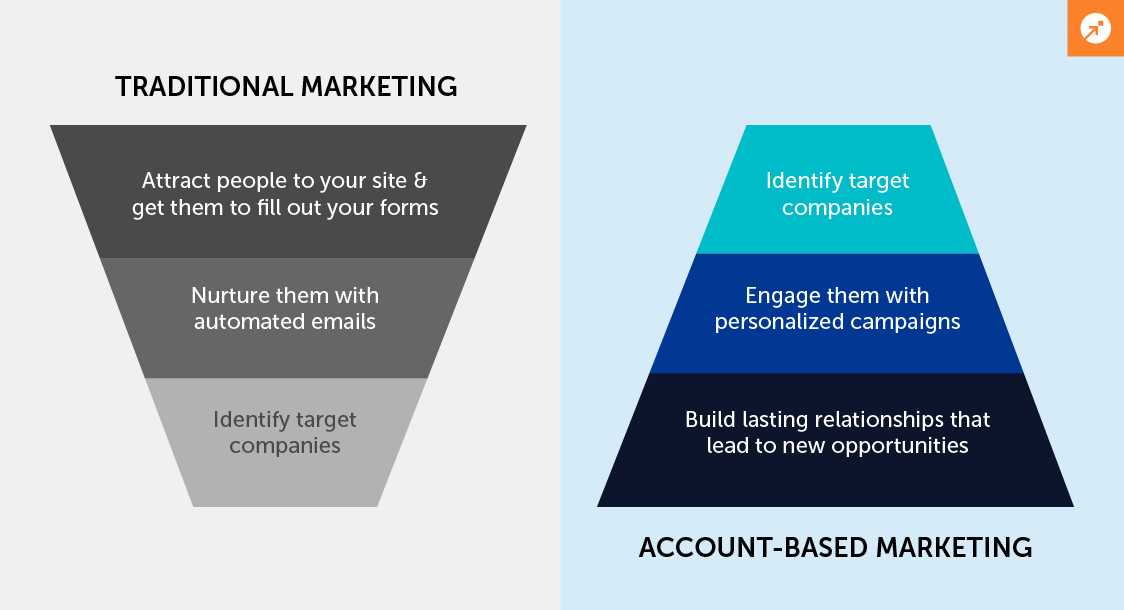
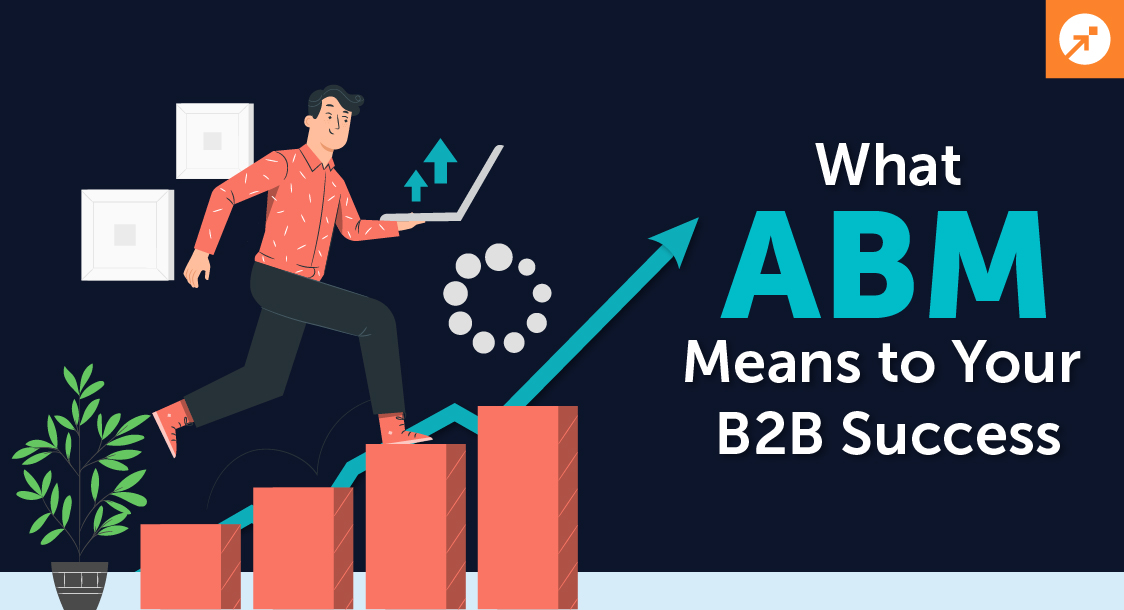

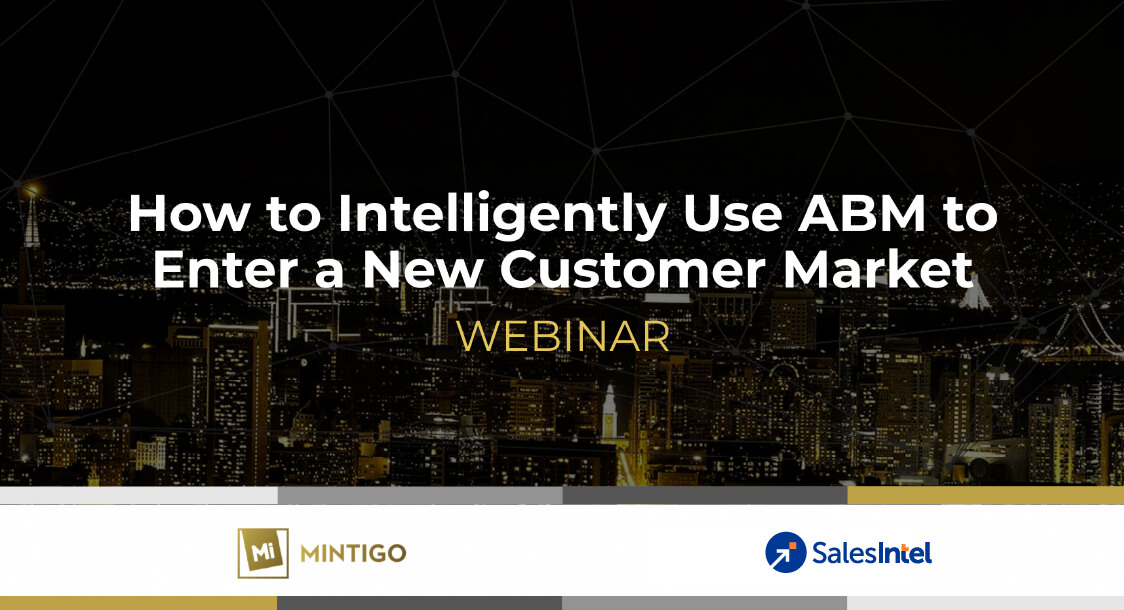
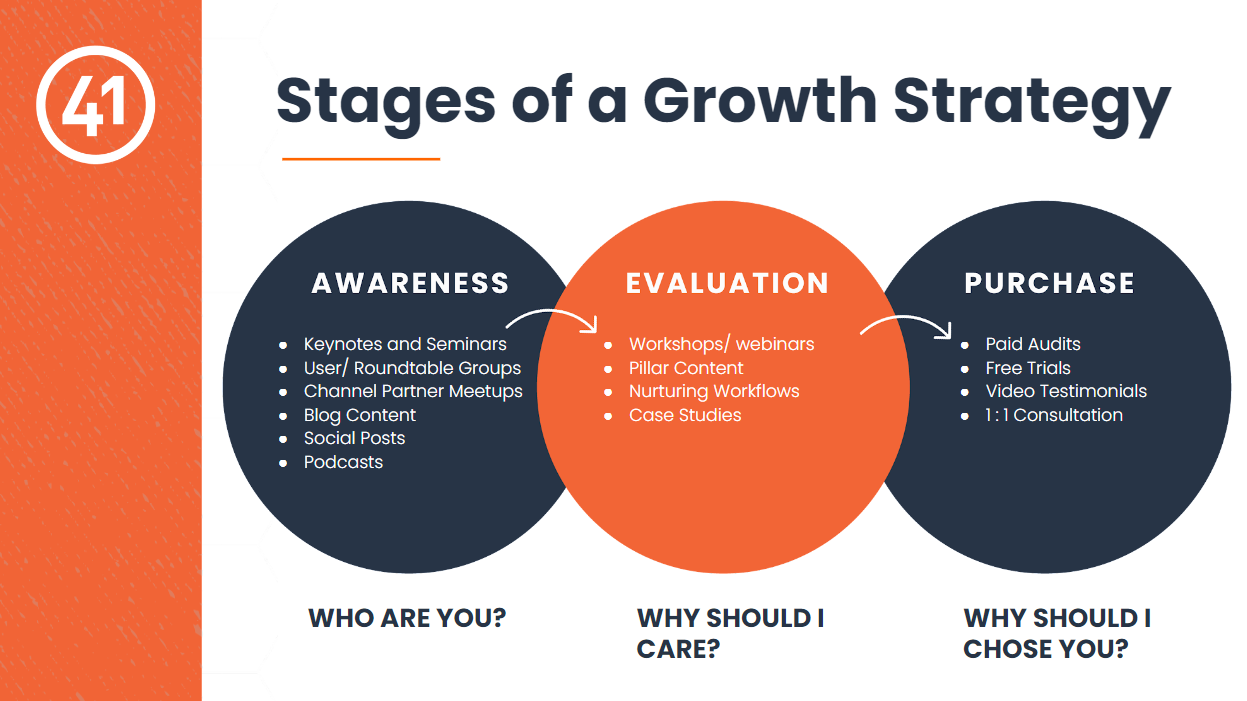
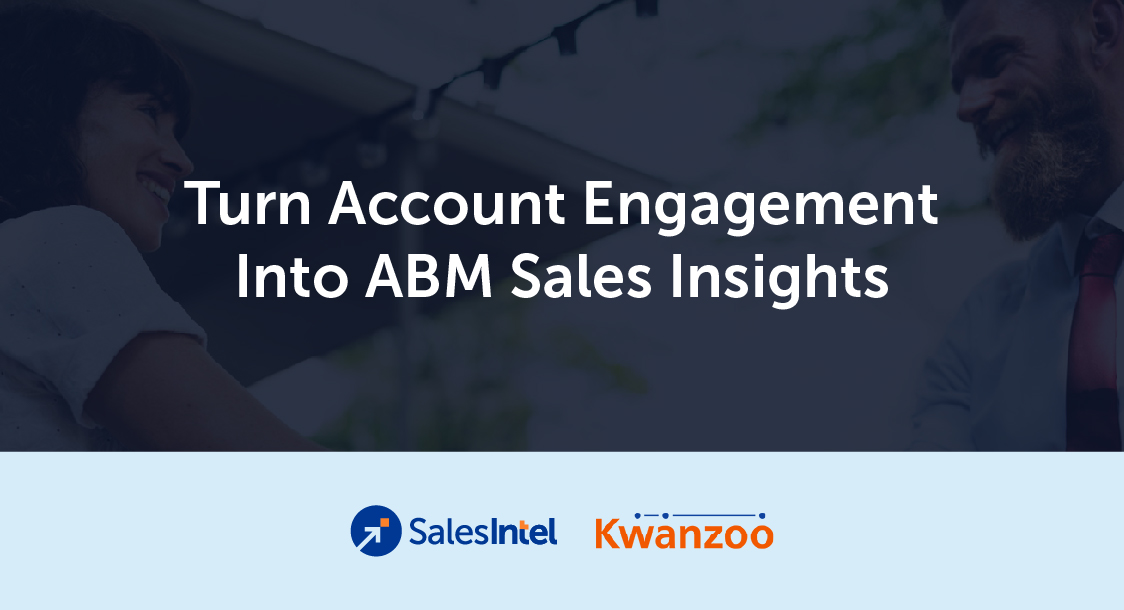
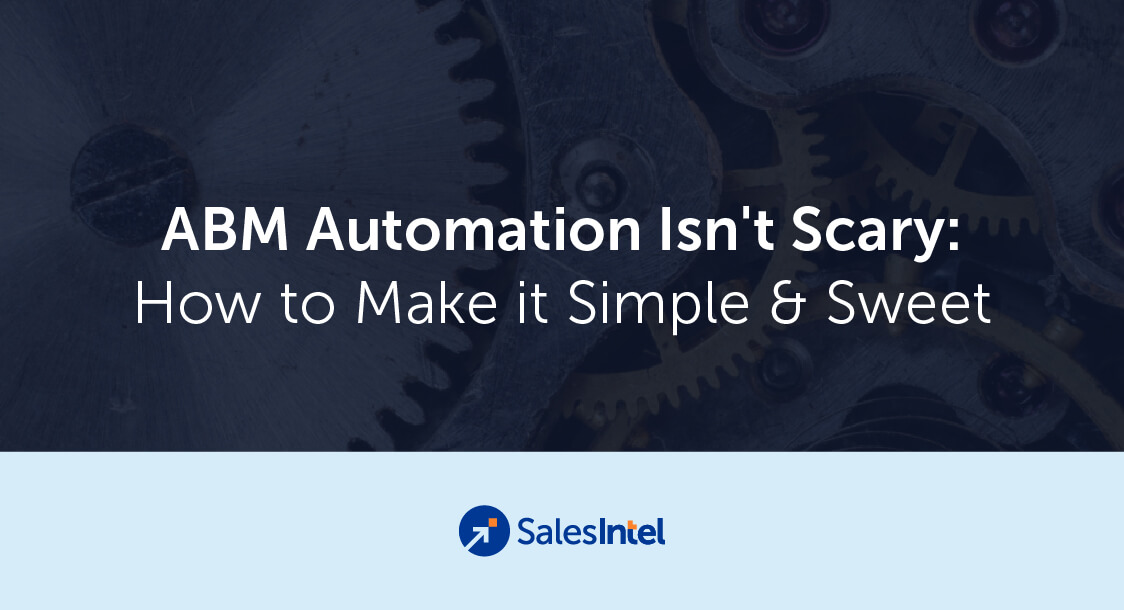
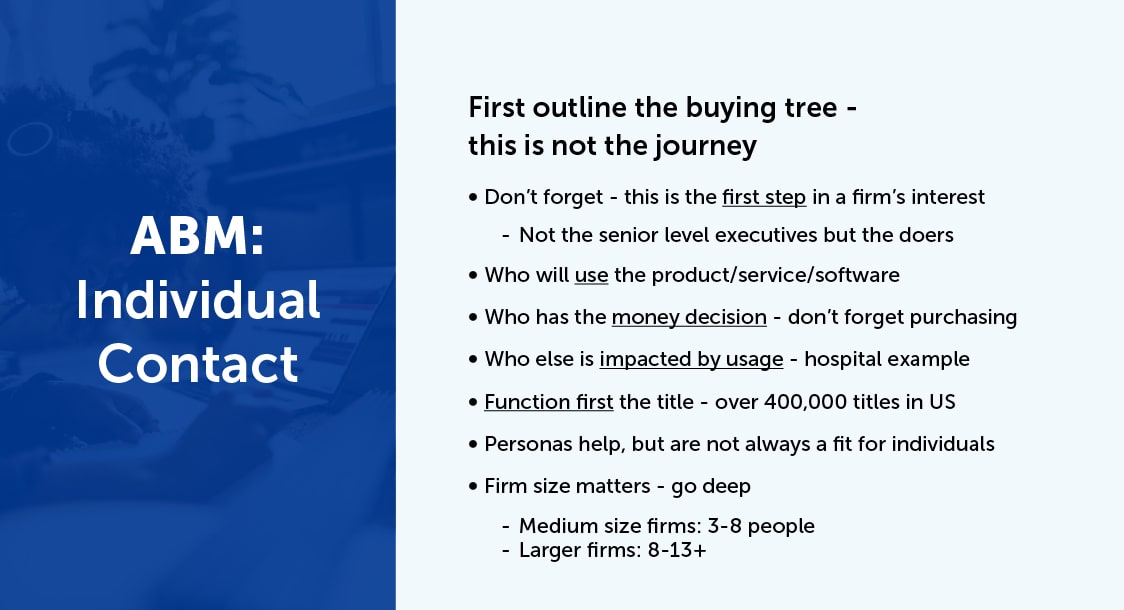

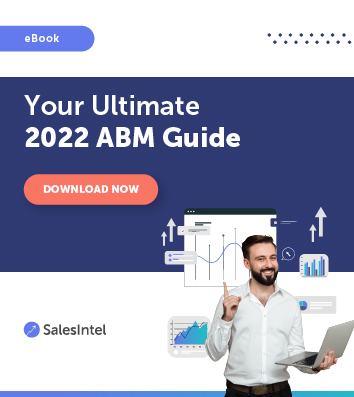







![Transforming B2B Sales and Marketing with ABM [Infographic]](https://salesintel.io/wp-content/uploads/2021/06/Artboard-1-1-660x430.png)
